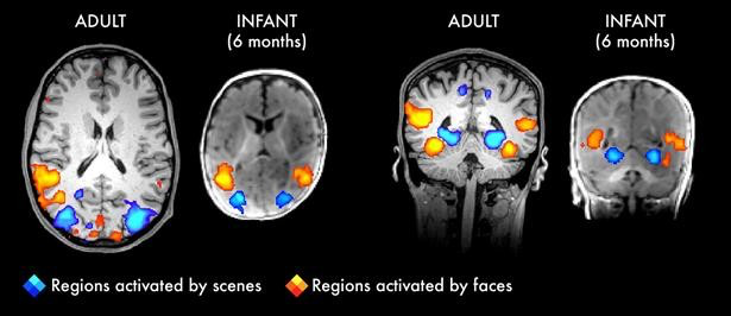A nurse is explaining to parents how the central nervous system of a child differs from that of an adult. Which statement accurately describes these differences?
The brain of a term infant weighs less than half of the weight of the adult brain.
The infant has 150 mL of CSF compared with 50 mL in the adult.
Coordination and fine motor skills develop as myelinization of peripheral nerves progresses.
Papilledema is a common manifestation of ICP in the very young child.
The Correct Answer is A
The statement that accurately describes the difference between the central nervous system (CNS) of a child and an adult is option A. The brain of a term infant weighs less than half of the weight of the adult brain. The brain undergoes significant growth and development during childhood and continues to develop until early adulthood. At birth, the brain is only a fraction of its adult weight, and it continues to grow and mature over time.
infant has 150 mL of cerebrospinal fluid (CSF) compared with 50 mL in the adult in (option B), is incorrect. The volume of CSF in the CNS is not a significant difference between children and adults.
coordination and fine motor skills develop as myelination of peripheral nerves progresses in (option C), is an incorrect statement. Myelination is an ongoing process that occurs throughout childhood and contributes to the development of coordination and fine motor skills.
papilledema is a common manifestation of increased intracranial pressure (ICP) in the very young child in (option D), is not correct. Papilledema refers to swelling of the optic disc and is not commonly seen in very young children. Signs of increased ICP in young children may present differently compared to adults and can include altered mental status, irritability, vomiting, and changes in vital signs.

Nursing Test Bank
Naxlex Comprehensive Predictor Exams
Related Questions
Correct Answer is C
Explanation
When caring for a child with an open fracture, the nurse should carefully assess for signs and symptoms of infection. An open fracture refers to a fracture where the bone is exposed through the skin, creating a direct pathway for microorganisms to enter and cause infection. Infection is a significant concern in open fractures and can lead to serious complications if not identified and treated promptly. Signs of infection may include increased pain, swelling, redness, warmth, purulent drainage, fever, or systemic signs of infection such as elevated white blood cell count.
Osteoarthritis in (option A) is incorrect because it, is not an immediate concern in the care of a child with an open fracture. Osteoarthritis refers to degenerative joint disease that typically develops over time and is not directly related to the acute management of an open fracture.
epiphyseal disruption in (option B) is incorrect because it, refers to an injury involving the growth plate (epiphyseal plate) that can affect bone growth and development. While it is a potential concern in fractures that involve the growth plate, it is not specific to open fractures and may not be an immediate priority in the initial assessment of an open fracture.
periosteum thickening in (option D) is incorrect because it, may occur in response to injury and fracture healing, but it is not specifically associated with open fractures and is not a primary focus in the initial assessment of an open fracture.
Correct Answer is B
Explanation
The best response for the nurse to give a parent regarding contacting the physician about an
infant with diarrhea is option B. In infants, dehydration can occur quickly, and a decrease in
urine output is an important indicator of fluid imbalance. Not having a wet diaper for 6 hours
can be a sign of inadequate fluid intake or excessive fluid loss, which warrants contacting the
paediatrician for further assessment and guidance.
"Call the doctor immediately if the infant has a temperature greater than 100° F,"in (option
A) is incorrect because it is not directly related to the concern of diarrhea. While a high fever
can be a sign of an underlying infection, it is not the primary concern in this case.
"The paediatrician should be contacted if the infant has two loose stools in an 8-hour
period,” in (option B) is incorrect because it may not necessarily require immediate medical
attention. While increased frequency of stools can be concerning, the absence of urine output
is a more critical indicator of dehydration.
"Notify the paediatrician if the infant naps more than 2 hours," in (option D) is incorrect
because it is unrelated to the concern of diarrhea and dehydration.
Whether you are a student looking to ace your exams or a practicing nurse seeking to enhance your expertise , our nursing education contents will empower you with the confidence and competence to make a difference in the lives of patients and become a respected leader in the healthcare field.
Visit Naxlex, invest in your future and unlock endless possibilities with our unparalleled nursing education contents today
Report Wrong Answer on the Current Question
Do you disagree with the answer? If yes, what is your expected answer? Explain.
Kindly be descriptive with the issue you are facing.
